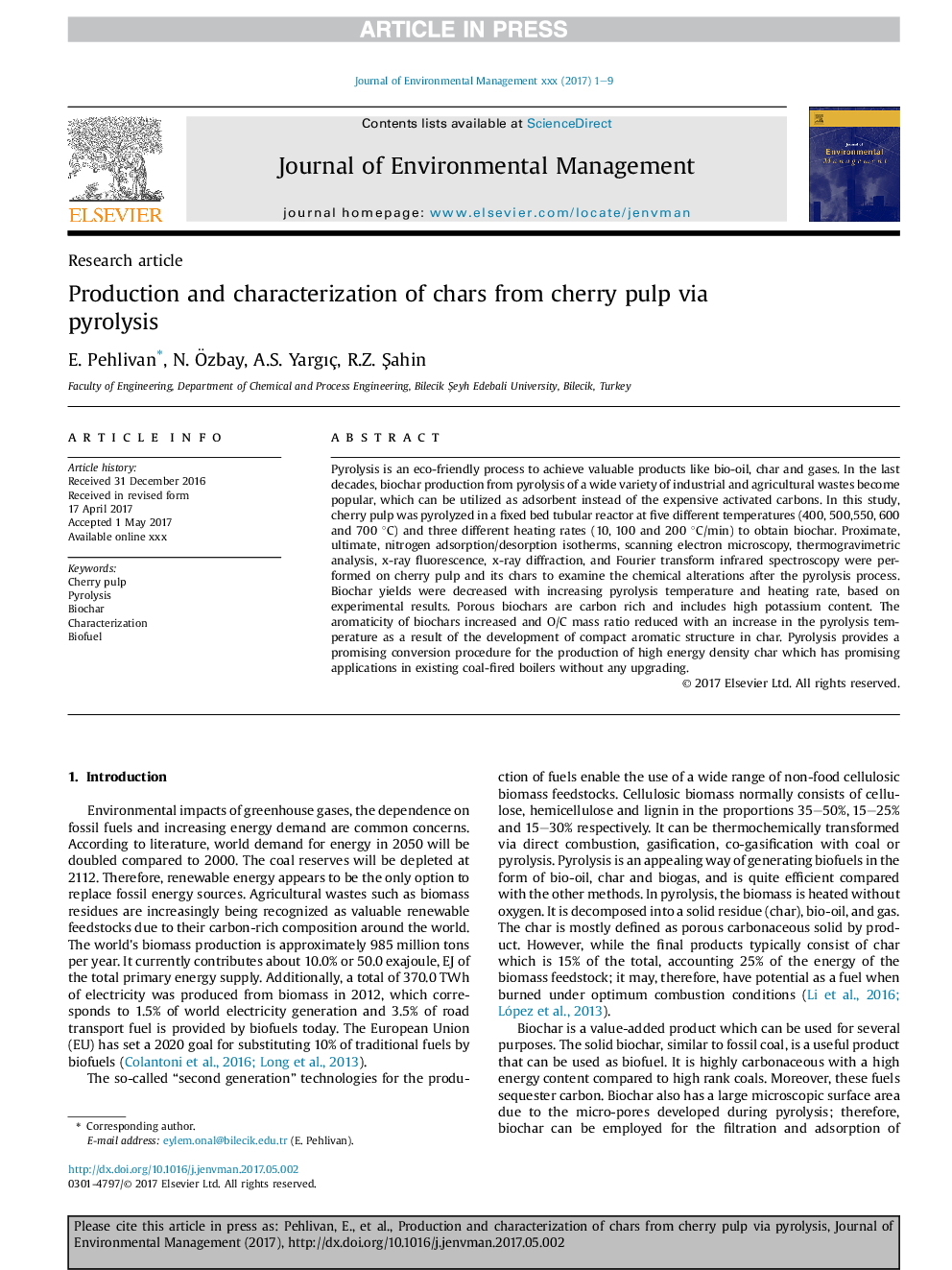| Article ID | Journal | Published Year | Pages | File Type |
|---|---|---|---|---|
| 5116380 | Journal of Environmental Management | 2017 | 9 Pages |
Abstract
Pyrolysis is an eco-friendly process to achieve valuable products like bio-oil, char and gases. In the last decades, biochar production from pyrolysis of a wide variety of industrial and agricultural wastes become popular, which can be utilized as adsorbent instead of the expensive activated carbons. In this study, cherry pulp was pyrolyzed in a fixed bed tubular reactor at five different temperatures (400, 500,550, 600 and 700 °C) and three different heating rates (10, 100 and 200 °C/min) to obtain biochar. Proximate, ultimate, nitrogen adsorption/desorption isotherms, scanning electron microscopy, thermogravimetric analysis, x-ray fluorescence, x-ray diffraction, and Fourier transform infrared spectroscopy were performed on cherry pulp and its chars to examine the chemical alterations after the pyrolysis process. Biochar yields were decreased with increasing pyrolysis temperature and heating rate, based on experimental results. Porous biochars are carbon rich and includes high potassium content. The aromaticity of biochars increased and O/C mass ratio reduced with an increase in the pyrolysis temperature as a result of the development of compact aromatic structure in char. Pyrolysis provides a promising conversion procedure for the production of high energy density char which has promising applications in existing coal-fired boilers without any upgrading.
Related Topics
Physical Sciences and Engineering
Energy
Renewable Energy, Sustainability and the Environment
Authors
E. Pehlivan, N. Ãzbay, A.S. Yargıç, R.Z. Åahin,
